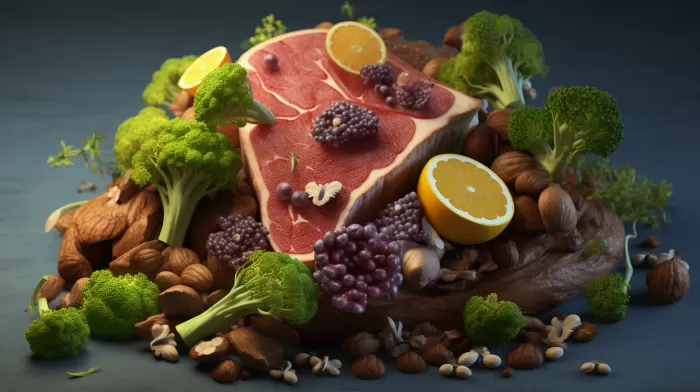Obesity, type 2 diabetes, hypertension, and high cholesterol are all well-known health problems that can significantly impact a person’s quality of life. However, many people are not aware of the crucial role that the liver plays in the development of these conditions.
Nonalcoholic fatty liver disease (NAFLD) occurs when excess fat accumulates in liver cells, leading to a disruption in the body’s ability to balance energy, promoting inflammation, impairing cell communication, and increasing cholesterol production. NAFLD affects approximately 30 percent of Americans, with rates rising to 70 percent in those with type 2 diabetes and a staggering 90 percent in obese individuals.
While diet plays a significant role in the accumulation of fat in the liver, it turns out that certain types of fatty acids can help protect against these fat deposits.
The Power of Medium Chain Fatty Acids (MCFAs)
Foods such as coconut oil, butter, cream, and milk are rich in medium chain fatty acids (MCFAs) that can be quickly absorbed and transported straight to the liver. While you might initially think this could be harmful, these fatty acids do not get deposited as fat. Instead, they help to induce thermogenesis, which speeds up your metabolic rate and helps you burn more fat, including liver fat. MCFAs also assist in repairing liver injury that may have been caused by NAFLD.
To reap the benefits of MCFAs, look to include at least two servings of fatty fish each week, such as salmon, sardines, and tuna, along with other omega-3-rich foods like chia seeds and walnuts. These can directly limit the amount of fat stored in the liver and, as a result, help reduce belly fat.
Nourishing Your Gut Bacteria
Another crucial aspect of combating NAFLD and improving liver function is focusing on nourishing your gut bacteria. Inadequate dietary choices can lead to imbalances in gut bacteria, and several studies have established a strong link between NAFLD and imbalanced gut bacteria.
You can actively influence the production of short-chain fatty acids (SCFAs) by consuming fiber-rich foods such as broccoli, carrots, asparagus, nuts, and seeds, as well as resistant starch found in cooked and cooled potatoes, rice, beans, legumes, green bananas and uncooked oats. These SCFAs help to enhance the growth of beneficial gut bacteria and improve nutrient utilization while preventing liver inflammation.
SCFAs also influence liver cholesterol synthesis, helping to regulate the production of HDL “good” cholesterol and LDL “bad” cholesterol. Furthermore, they stimulate the liver to remove fat, thereby helping reverse NAFLD.
In summary, understanding the roles of both MCFAs and SCFAs in maintaining optimal liver function and combating NAFLD is essential for anyone looking to achieve and maintain a healthy lifestyle. Incorporating these fatty acids into your diet can help prevent the development of harmful liver fat deposits, strengthen your liver’s ability to combat inflammation, and regulate cholesterol levels.
By making a conscious effort to include more of these beneficial fats in your diet and nourishing your gut bacteria, you can significantly improve your liver function, combat the risk of NAFLD, and enhance your overall health and well-being. Remember, the key to successfully fighting disease relies not only on knowing which foods can help, but also understanding the importance of incorporating these essential nutrients into your daily meal plans.



